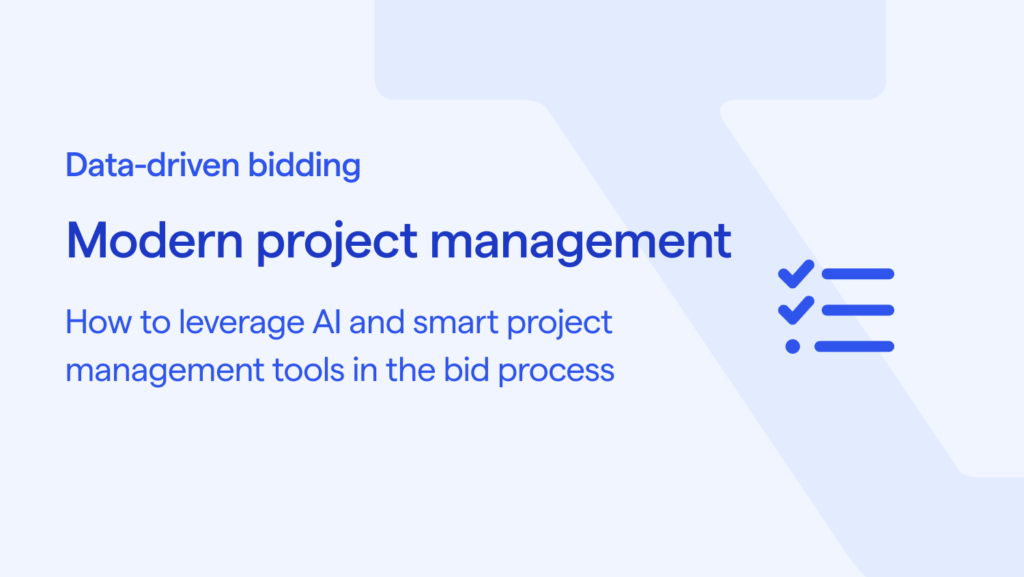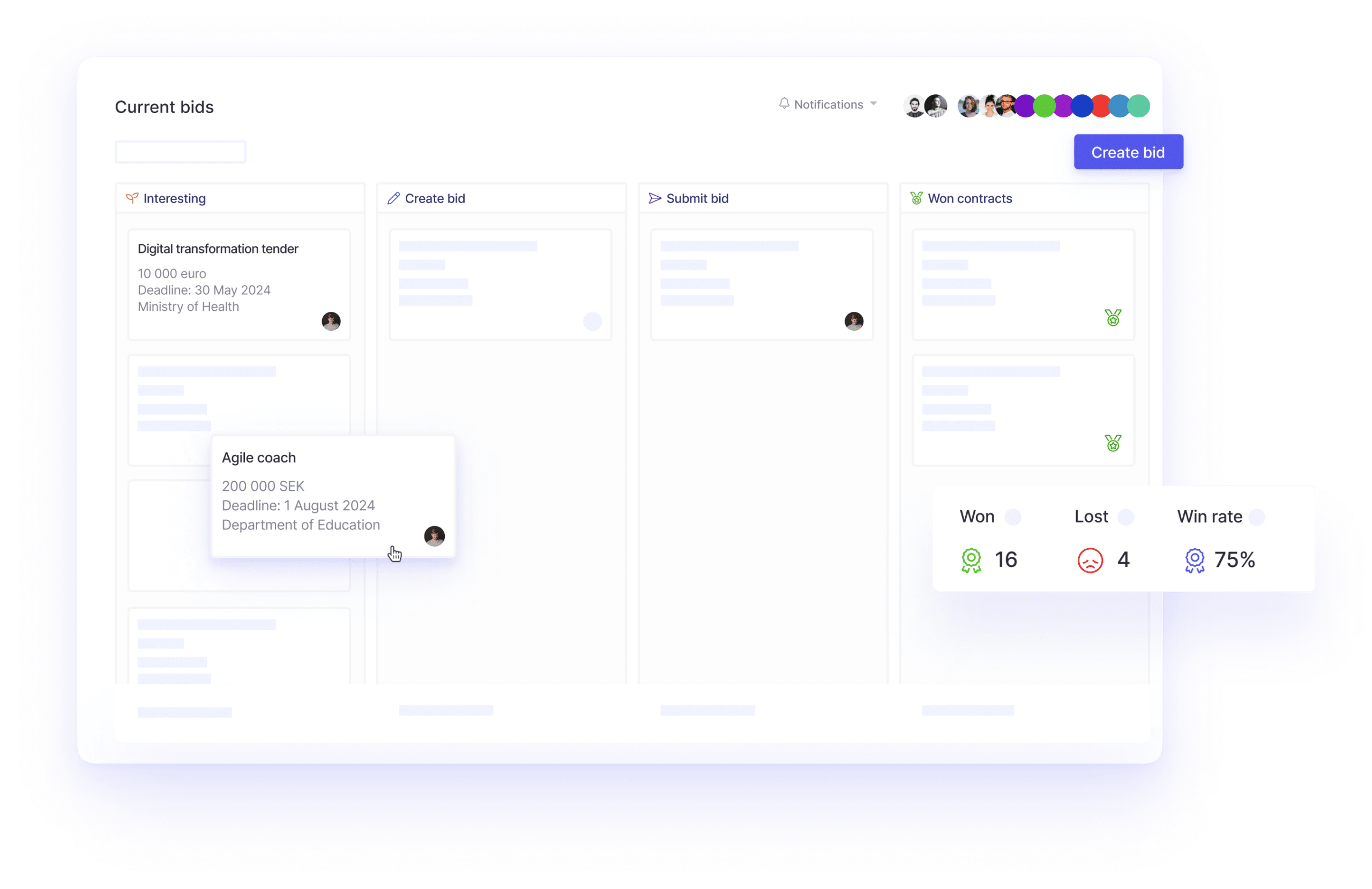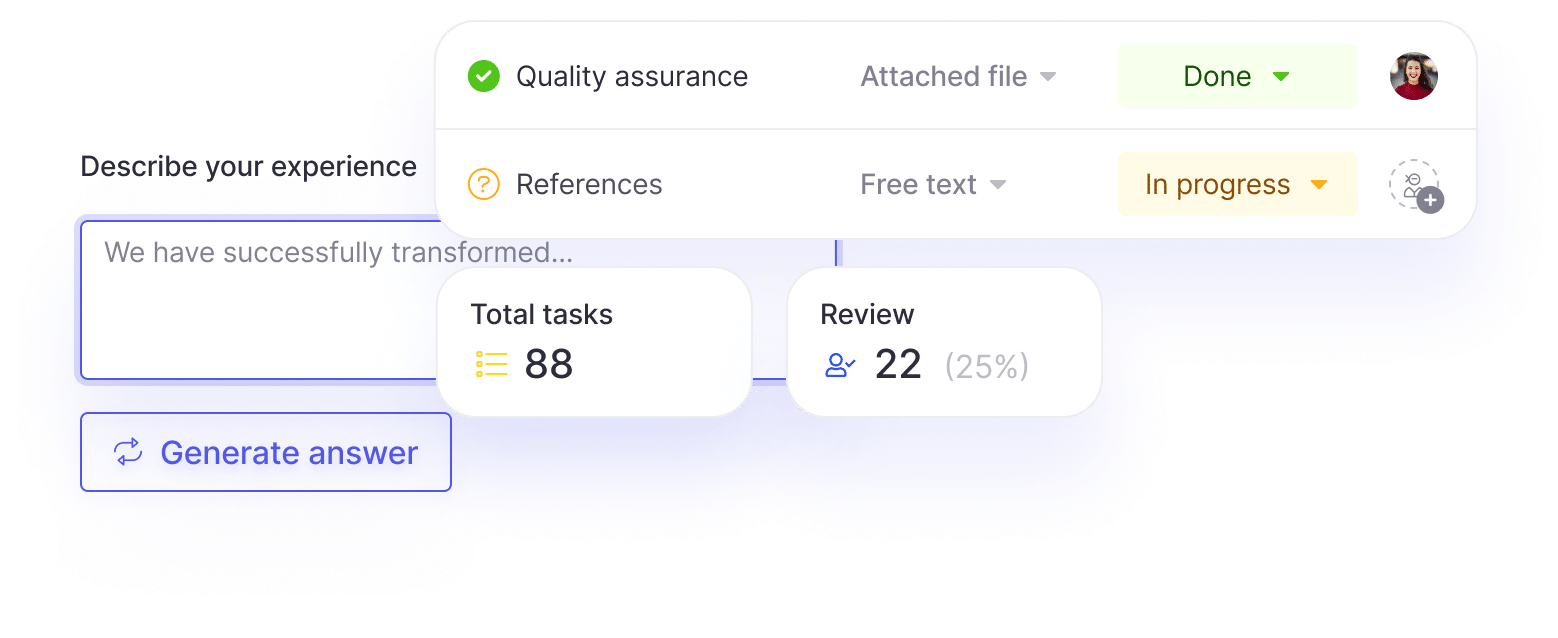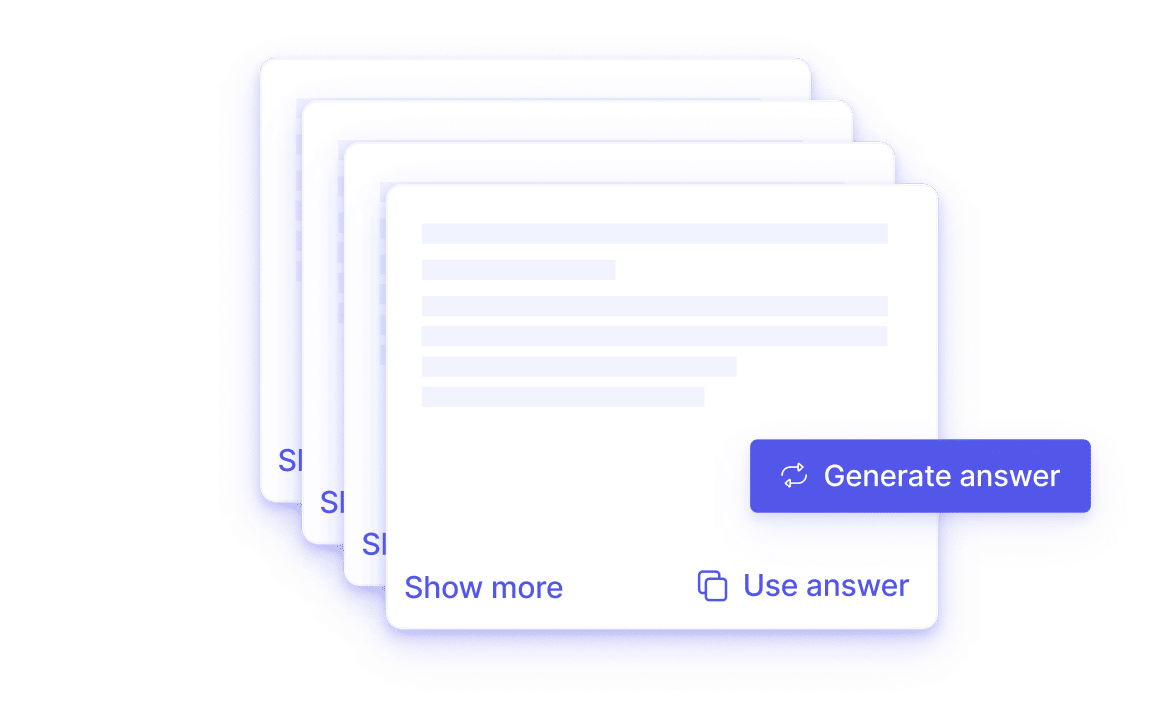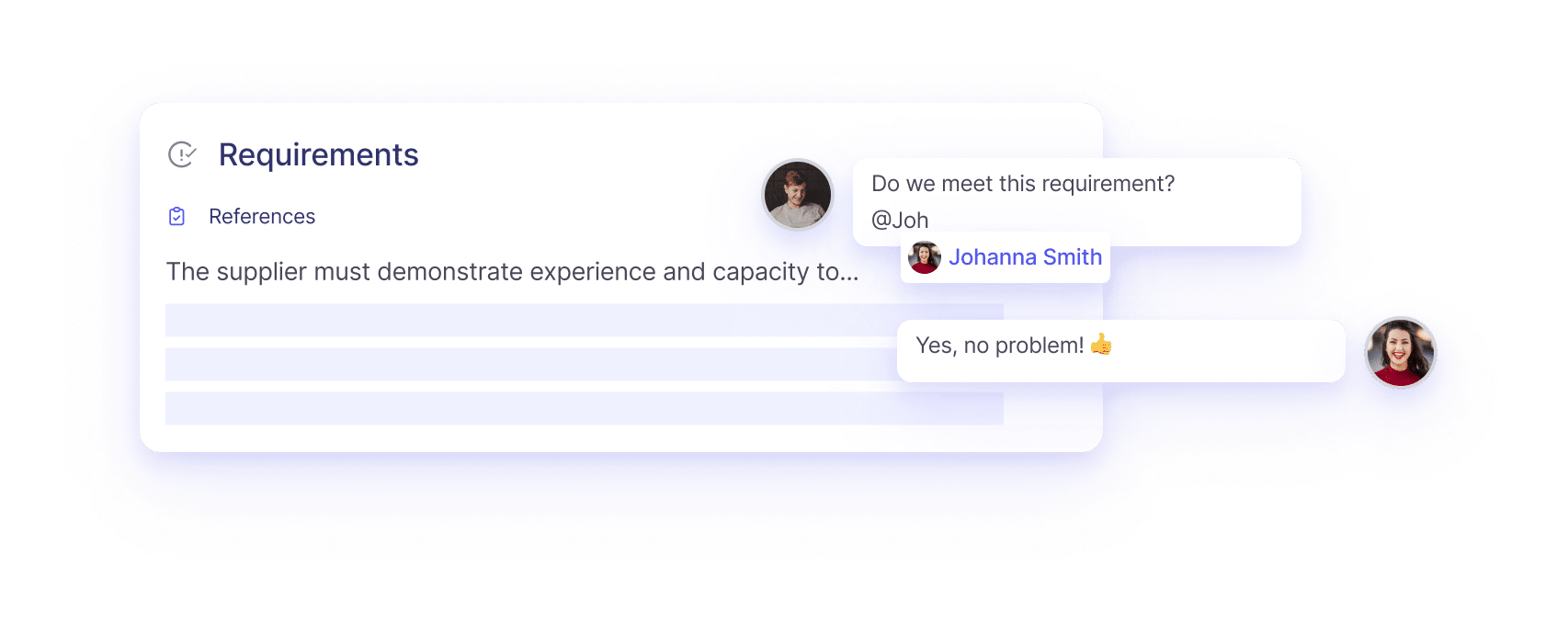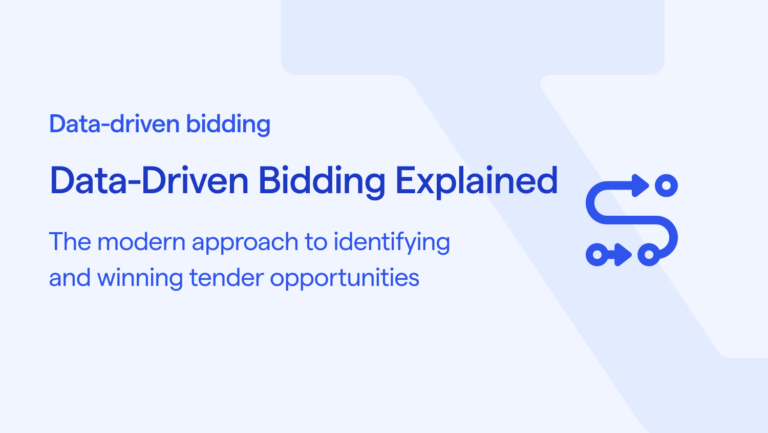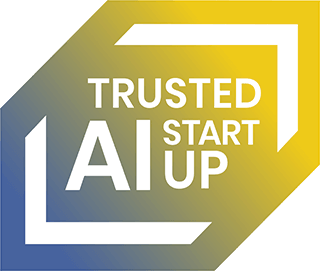A lot is happening right now. Smart project management tools have been popping up left and right for a few years, and AI is constantly making headlines.
And now the turn has come to the bid teams. Now there are project tools specifically designed to make the bidding process smarter, easier, and faster.
Exciting, isn’t it?
In this article, we’ll explore what a modern bidding process looks like – with AI, automation, and smart collaboration tools.
Big picture of your team’s bids
All too often, this is what it sounds like: we don’t know how many bids we’ve submitted this year.
Hang on.
You don’t know?
Lack of time in bidding processes causes many bid teams to run so fast that they barely have time to take in the big picture.
Well that’s not sustainable.
With modern project management, you have a bid space where you gather all your:
- interesting business opportunities,
- ongoing bids, and
- submitted bids.
You log who’s responsible for each bid, and your wins and losses.
(And don’t get the idea that this is some kind of documentation on the side. No, you simply add the tender itself to your bid space.)
It’s actually not more complicated than that. A small but impactful modernisation.
The effect?
✅ Easier for team leads to manage with a good big picture
✅ Data of managed and submitted bids is automatically logged
✅ Easier to evaluate results and win rate
✅ Reduced need for check-ins and sync meetings
✅ The whole team knows what’s being worked on
Automatically created project plans
Before you start writing a bid, you need some kind of structure. Some have intimate relationships with their Excel files. Others have chosen a tool that looks cool, but it’s still a whole lot of copy-pasting.
You find a requirement in the tender.
You enter the requirement into your file.
You find the next requirement in the tender.
You enter the requirement into your file.
Just reading it makes me tired.
No, we can do better!
With a modern tendering process, you
- let AI identify the requirements for you,
- press a button, and
- abracadabra, you have a neat to-do list with everything that needs answering.
Did I mention that you also write your bid directly in the to-do list?
The effect?
✅ Less tedious administration
✅ Crucial time saved
✅ More time to spend on the actual bid
AI supported bid writing
So, we’ve reached the actual bid. Writing it. Which might be the fun part, but again, time-consuming!
We’ve all heard how amazing a writer ChatGPT is.
Sure, definitely.
For a robot.
But there’s so much context you need to explain every time you want a little AI help, to get some meaningful output.
So how do we solve that?
With an AI that has read all your old bids of course! One that knows what you do and can reuse your previous responses in a new context.
You don’t have to search for your favourite phrases and technical descriptions.
You quickly get a first draft.
And can focus on the fine-tuning that no AI can replace.
The effect?
✅ Easy to find previous bid responses
✅ Shorter time to a first bid draft
✅ More time for the important questions
✅ And ultimately: good bids, faster
Collaborate effectively where the work happens
Ping. Email.
Ding. Teams/Slack.
Ring. Phone.
Tap. Colleague by your shoulder.
Collaboration is beautiful and sometimes a bit all over the place.
What did your colleague say again about that reference?
What was the wording your team lead suggested?
Where’s that question your colleague needed help answering?
We often jump between many different tools, and without thinking about it, we spend a whole lot of time on searching, finding, checking.
Let’s straighten that out!
In a modern bid process, you tag your colleagues and leave comments where the work happens.
Got a question about potentially interesting tender? Tag your colleague in the tender!
Done with the response to a requirement? Update the status in the bid!
Technical question? Tag the right person in the tender!
Stuck on a wording? Tag your colleague in the bid!
Ready? The effects!
✅ Quick and easy communication
✅ Easy to find context to the question
✅ Efficient collaboration within the team
✅ Good overview of the bid progress
But do we really need all of this?
Do we need to have a smart bidding process?
No, of course not.
The typewriter worked great for many years.
Horses and carriages gave the city a lovely charm.
But think about it like this:
- Most bid teams live with constant lack of time.
- More time = better and maybe more bids.
- Better/more bids = more won tenders.
- More won tenders = money 💵.
Then it gets pretty relevant to have a modern bid process, doesn’t it?
(And we haven’t even touched on modern monitoring and qualification.)
(Or that it’s actually more fun to work this way.)
A little tempted?
We’d love to show you what a modern bidding process could look like for you. Book your demo here.
